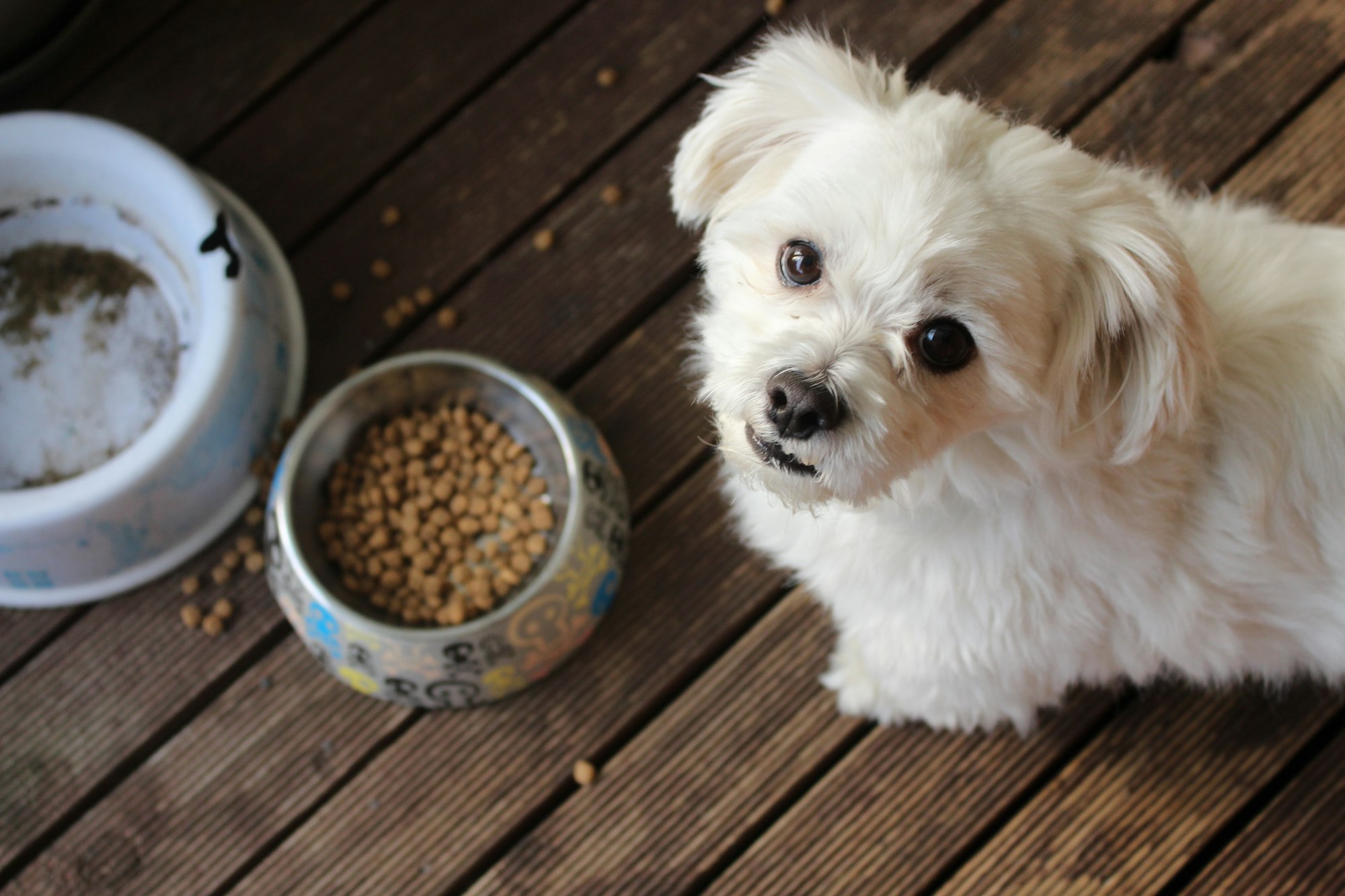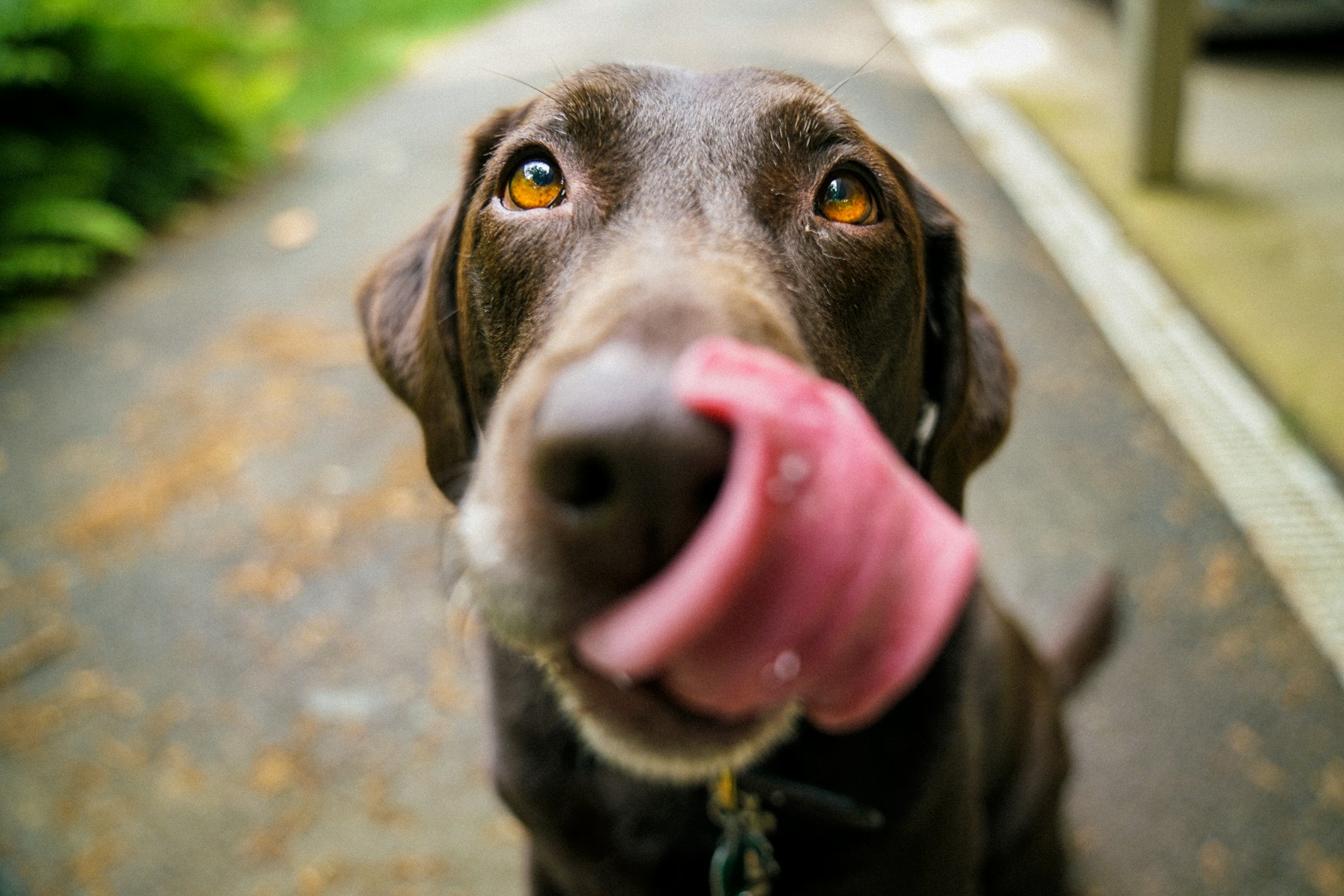Owning a dog comes with the responsibility of ensuring their well-being, and one common concern among dog owners is itchy skin. Just like humans, dogs can suffer from allergies and sensitivities, leading to uncomfortable skin conditions. While there can be several reasons for itchy skin in dogs, choosing the right dog food can make a significant difference. Here, we will explore the best dog food options to alleviate itchy skin and enhance your furry friend's overall health.

Identifying Allergies in Dogs
Identifying allergies in dogs is crucial for addressing itchy skin and other related issues. Dogs, like humans, can develop sensitivities to certain substances, leading to allergic reactions. Allergies can be caused by various factors, and it's essential to be observant and vigilant as a dog owner.
Common Allergens Causing Itchy Skin
1. Food Allergies: Dogs can be allergic to certain proteins, grains, or additives commonly found in commercial dog foods. Chicken, beef, dairy, wheat, soy, and corn are some common food allergens.
2. Environmental Allergies: Pollen, mold, dust mites, and other environmental factors can trigger allergic reactions in dogs. These allergens are typically inhaled or come into contact with the dog's skin.
3. Flea Allergy Dermatitis: Some dogs are hypersensitive to flea saliva. Even a single flea bite can cause severe itching and discomfort for these dogs.
4. Contact Allergies: Certain materials like fabrics, cleaning products, or plants can cause allergic reactions when they come into direct contact with a dog's skin.

Signs and Symptoms of Allergies
Recognizing the signs of allergies in dogs is essential for early intervention and effective management. Some common symptoms of allergies in dogs include:
Itching and Scratching: Excessive itching, scratching, and licking, especially in specific areas like dog paws, ears, or belly.
Redness and Inflammation: Allergies can cause red and inflamed skin, often accompanied by rashes or hives.
Hair Loss: Persistent itching may lead to hair loss in the affected areas.
Ear Infections: Dogs with allergies may develop frequent ear infections, leading to discomfort and pain.
Gastrointestinal Upset: In some cases, allergies can also manifest as gastrointestinal issues like diarrhea or vomiting.
Rubbing and Scooting: Dogs may rub their bodies against furniture or scoot on the floor to relieve itching.
Watery Eyes and Sneezing: Environmental allergies may cause symptoms similar to seasonal allergies in humans, such as watery eyes and sneezing.
If you notice any of these symptoms in your dog, it's essential to consult a veterinarian for proper diagnosis and treatment. The vet may conduct allergy tests or recommend an elimination diet to identify the specific allergens affecting your dog.
Recognizing the nuances of your dog's allergies is pivotal in administering effective care. From considering dietary adjustments like adding a cracked raw egg over dog food to utilizing hypoallergenic products or sidestepping certain environmental stimuli, proactive measures against allergies can substantially elevate your dog's well-being and provide relief from irksome itchy skin.
Ingredients to Look for in Dog Food
Selecting the right ingredients in your dog's food can play a vital role in improving their skin health and alleviating itchy skin issues. When shopping for dog food, keep an eye out for the following essential ingredients:

1. Omega-3 Fatty Acids
Omega-3 fatty acids, such as those found in fish oil or flaxseed oil, offer numerous benefits for your dog's skin and coat. These healthy fats have anti-inflammatory properties, which can help reduce skin irritation and itching. Moreover, omega-3s promote a shiny and healthy coat, giving your furry friend that extra luster.
2. Protein Sources
High-quality protein sources are crucial for your dog's overall health, including their skin and coat. Look for dog foods that contain real meat, such as chicken, turkey, or lamb, as the primary protein source. These proteins provide essential amino acids, contributing to a strong and healthy coat.
3. Essential Vitamins and Minerals
Vitamins and minerals are essential for maintaining optimal skin health and overall well-being. Vitamin E, in particular, acts as an antioxidant and can help soothe and nourish the skin. Additionally, minerals like zinc and biotin support healthy skin and a shiny coat.
4. Natural Remedies
Certain natural ingredients have soothing properties that can benefit good family dogs with itchy skin. For example, foods with turmeric or chamomile can help reduce inflammation and irritation. Coconut oil is another natural remedy that can aid in moisturizing dry skin.
5. Limited Ingredient Formulas
If your dog has a history of food allergies, consider opting for limited ingredient formulas. These happy dog foods have a simplified ingredient list, making it easier to identify and avoid potential allergens.
6. Grain-Free Options (If Necessary)
While not all dogs require grain-free diets, some may benefit from avoiding grains like wheat, corn, or soy. Grain-free options can be especially useful for dogs with grain sensitivities or allergies.
7. Probiotics
Probiotics are beneficial bacteria that support a healthy gut and immune system. A well-balanced gut can help reduce inflammation and enhance your dog's overall well-being, including their skin health.
8. Hydration Support
Ensuring your dog stays hydrated is essential for healthy skin. Look for dog foods with moisture-rich ingredients like fruits and vegetables, which can contribute to your dog's overall hydration.
By choosing dog food with these essential ingredients, you can provide your furry companion with a well-rounded diet that supports their skin health and helps combat itchy skin issues. Always consult with your veterinarian before making significant changes to your dog's diet to ensure it aligns with their specific nutritional needs and health condition.
Top Brands for Itchy Skin
Several reputable dog food brands cater to dogs with itchy skin conditions. One such brand is "HealthyPaws," known for its grain-free and hypoallergenic formulas. Their limited-ingredient diets contain essential nutrients to nourish the skin and coat, and many dog owners have reported positive results.
Another excellent option is "Nature's Choice," which offers a range of novel protein sources and avoids common allergens. Their balanced recipes ensure your dog receives all the necessary nutrients without triggering allergic reactions.
For those looking for specialized formulas, skin care select provides premium dog food designed explicitly for dogs with sensitive skin. This brand focuses on high-quality ingredients and gentle formulations to support optimal skin health.
Homemade Dog Food Recipes for Itchy Skin
Below are some homemade dog food recipes that can help alleviate itchy skin issues in dogs:
1: Chicken and Sweet Potato Delight
Ingredients:
· 2 cups cooked chicken (shredded)
· 1 cup cooked sweet potatoes (mashed)
· 1/2 cup green beans (cooked and chopped)
· 1/4 cup carrots (cooked and diced)
· 1 tablespoon coconut oil
· 1/2 teaspoon fish oil (optional)
Instructions:
- In a large mixing bowl, combine the shredded chicken, mashed sweet potatoes, chopped green beans, and diced carrots.
- Add the coconut oil to the mixture, which provides essential fatty acids for healthy skin and a shiny coat.
- If desired, include fish oil for an extra boost of omega-3 fatty acids, which can further reduce inflammation and itching.
- Mix all the ingredients thoroughly until well combined.
- Serve the homemade dog food to your furry friend in their regular feeding bowl.
- Store any leftovers in an airtight container in the refrigerator for up to three days.

2: Turkey and Quinoa Medley
Ingredients:
· 2 cups cooked turkey (ground or shredded)
· 1 cup cooked quinoa
· 1/2 cup pumpkin puree (not pumpkin pie filling)
· 1/4 cup blueberries
· 1 tablespoon olive oil
· 1/2 teaspoon turmeric powder (anti-inflammatory properties)
Instructions:
- In a mixing bowl, combine the cooked turkey and quinoa.
- Add the pumpkin puree, which is an excellent source of fiber and can help soothe the digestive tract.
- Toss in the blueberries, which are rich in antioxidants and can support overall health.
- Drizzle the olive oil over the mixture to add healthy fats and improve palatability.
- Sprinkle the turmeric powder, a natural anti-inflammatory spice that may benefit dogs with itchy skin.
- Mix all the ingredients thoroughly until well incorporated.
- Serve the turkey and quinoa medley to your dog and watch them enjoy this tasty and nutritious meal.
- Store any leftover portions in the refrigerator for up to three days.
Remember to feed your dog these homemade recipes as a supplement to their regular diet or as directed by your veterinarian. It's crucial to monitor your dog's response to the new food and seek professional advice if there are any adverse reactions. Additionally, ensure that the homemade meals meet your dog's specific nutritional requirements and are free from ingredients that may trigger allergies or sensitivities.

Transitioning to a New Diet
Transitioning your dog to a new diet requires patience and a gradual approach to avoid gastrointestinal upset and ensure a smooth adjustment. Follow these steps to transition your furry friend to a new diet:
Step 1: Introduce the New Food Gradually
Start by mixing a small portion of the new dog food with their current food. Begin with about 25% of the new food and 75% of their regular food. This allows your dog's digestive system to get used to the new ingredients slowly.
Step 2: Monitor Your Dog's Response
Observe your dog closely during the transition period. Look for any signs of digestive issues, such as diarrhea, vomiting, or changes in appetite. If you notice any adverse reactions, consider slowing down the transition process or seeking advice from your veterinarian.
Step 3: Increase the Proportion of New Food
Over several days, gradually increase the proportion of the new food while decreasing the amount of their old food. Aim for a 50-50 mix after a few days, then 75% new food and 25% old food, before fully transitioning to the new diet.
Step 4: Monitor Hydration
Ensure your dog stays well-hydrated during the transition. Provide access to fresh water at all times, as dietary changes can lead to increased thirst.
Step 5: Stick to a Consistent Feeding Schedule
Maintain a consistent feeding schedule throughout the transition. Regular meal times help regulate your dog's digestive system and establish a routine.
Step 6: Observe for Allergic Reactions
If your dog has a history of food allergies, keep a close eye on their skin and overall behavior during the transition. If any signs of allergies appear, discontinue the new food and consult your veterinarian.
Step 7: Complete the Transition
Once your dog is successfully eating the new food without any issues, and you have gradually phased out their old diet, they should be fully transitioned to the new diet.
Step 8: Consideration for Future Changes
In the future, if you need to switch your dog's food again, follow the same gradual transition process to ensure their digestive system adapts smoothly to the change.
Remember, each dog is unique, and some may require a slower or faster transition process. Always consult your veterinarian if you have any concerns or questions about transitioning your dog to a new diet. A gradual transition is key to a happy and healthy adjustment to the new food, supporting your dog's overall well-being, including their skin health.

Conclusion
In conclusion, addressing itchy skin in dogs requires a comprehensive approach, and choosing the right dog food is a crucial step. By identifying potential allergens, opting for suitable ingredients, and considering top brands, you can improve your dog's skin health and overall well-being. Whether you choose commercial dog food or opt for homemade recipes, always prioritize your dog's nutritional needs and consult a veterinarian for personalized guidance.
FAQs About Dog Food for Itchy Skin
Q: How can I tell if my dog has food allergies?
A: Watch for signs like itching, redness, excessive scratching, and gastrointestinal issues. Consult your veterinarian for a proper diagnosis and how often vet is crucial.
Q: Can homemade dog food be nutritionally balanced?
A: Yes, but it's crucial to follow recipes designed for dogs and consult a professional to ensure it meet their nutritional needs.
Q: Is grain-free dog food the best option for dogs with itchy skin?
A: Not necessarily. While some dogs benefit from grain-free diets, others may have allergies to other ingredients. It's best to try different options based on your dog's specific needs.
Q: How long should I wait to see improvements in my dog's itchy skin after switching their food?
A: It can vary depending on the dog and the severity of the allergy. Some may see improvements within a few weeks, while others may take longer.
Q: Can I give my dog supplements for itchy skin?
A: Always consult with your veterinarian before giving your dog any supplements. They can recommend appropriate options and dosages.